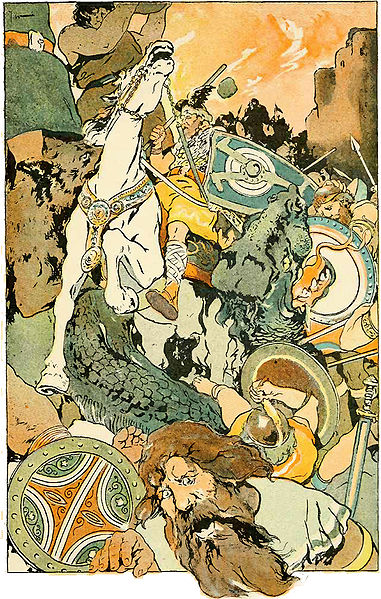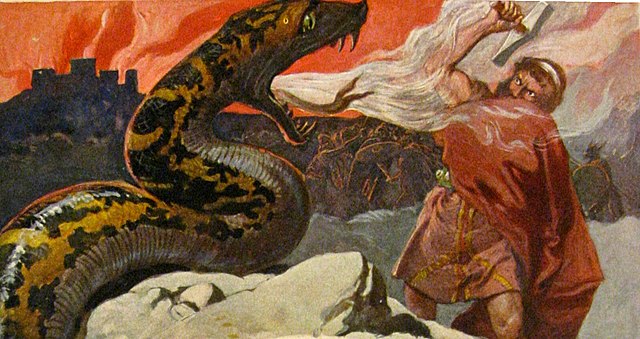In Norse mythology, Naglfar or Naglfari is a boat made entirely from the fingernails and toenails of the dead. During the events of Ragnarök, Naglfar is foretold to sail to Vígríðr, ferrying hordes of monsters that will do battle with the gods. Naglfar is attested in the Poetic Edda, compiled in the 13th century from earlier traditional sources, and the Prose Edda, also composed in the 13th century. The boat itself has been connected by scholars with a larger pattern of ritual hair and nail disposal among Indo-Europeans, stemming from Proto-Indo-European custom, and it may be depicted on the Tullstorp Runestone in Scania, Sweden.
Image: Tullstorpstenen, DR 271,Tullstorp 1 1, Runristning (Nagelfar)
Image: Skepp på runsten Ledberg
In Norse mythology, Ragnarök is a foretold series of impending events, including a great battle in which numerous great Norse mythological figures will perish ; it will entail a catastrophic series of natural disasters, including the burning of the world, and culminate in the submersion of the world underwater. After these events, the world will rise again, cleansed and fertile, the surviving and returning gods will meet, and the world will be repopulated by two human survivors, Líf and Lífþrasir. Ragnarök is an important event in Norse mythology and has been the subject of scholarly discourse and theory in the history of Germanic studies.
The north portal of the 12th-century Urnes stave church has been interpreted as containing depictions of snakes and dragons that represent Ragnarök.
Then the Awful Fight Began (by George Wright, 1908)
Odin and Fenrir, Freyr and Surt (by Emil Doepler, 1905)
Thor and the Midgard Serpent (by Emil Doepler, 1905)






